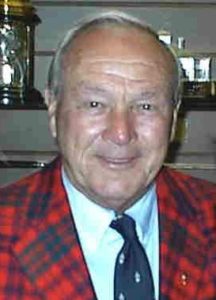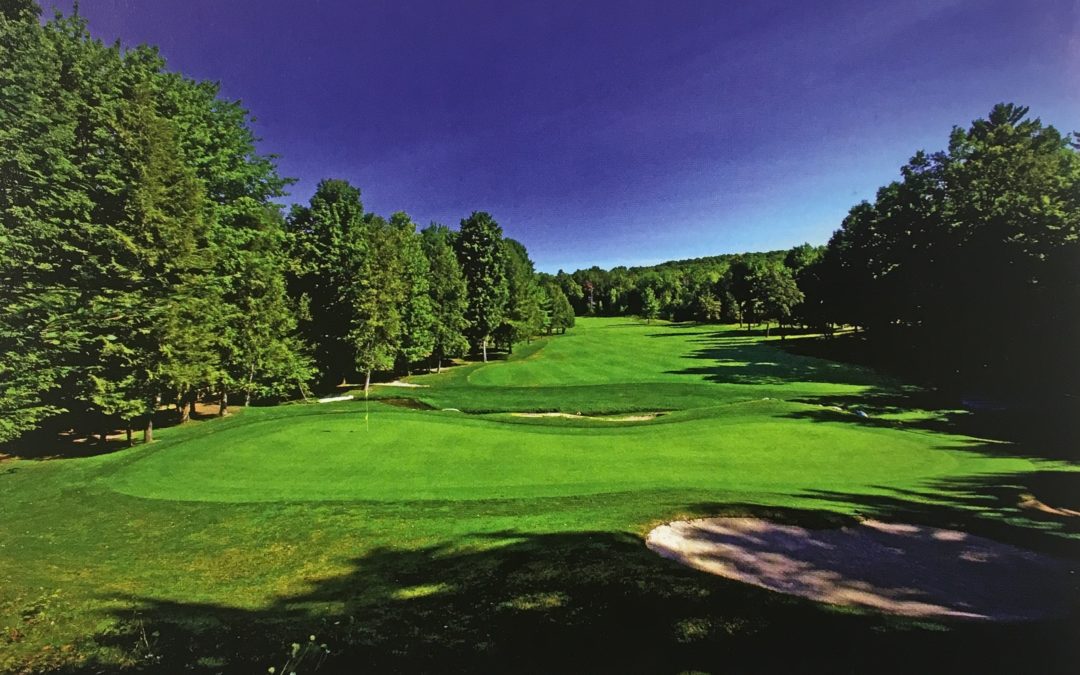Arnold Palmer won ninety-two professional events, capturing the Masters Tournament title four times, twice winning the British Open, and fashioning a dramatic victory at the 1960 U.S. Open. “The King” played on seven Ryder Cup teams, and captained two.  His charity work, business acumen, and aviation skills are legendary. Arnold Palmer Design Company was founded in 1971 when Palmer joined forces with longtime friend Ed Seay to create what was then known as Palmer Course Design Company. The company has designed over three hundred courses and clubs worldwide, including The Tradition Golf Club in California, Ireland’s K Club – the 2006 Ryder Cup course – and Spring Island in Okatie, South Carolina, as well as design modifications to Bay Hill Club and Lodge, home of the Arnold Palmer Invitational, and Laurel Valley in Pennsylvania, which was ranked one of the fifty best golf courses in 2006.
His charity work, business acumen, and aviation skills are legendary. Arnold Palmer Design Company was founded in 1971 when Palmer joined forces with longtime friend Ed Seay to create what was then known as Palmer Course Design Company. The company has designed over three hundred courses and clubs worldwide, including The Tradition Golf Club in California, Ireland’s K Club – the 2006 Ryder Cup course – and Spring Island in Okatie, South Carolina, as well as design modifications to Bay Hill Club and Lodge, home of the Arnold Palmer Invitational, and Laurel Valley in Pennsylvania, which was ranked one of the fifty best golf courses in 2006.
Michael Patrick Shiels interviewed Arnold Palmer on the Hawaiian Island of Maui, on the practice range at the famed Kaanapali Golf Club, where The King was practicing between rounds of the 2008 Wendy’s Champions Skins Game.
MPS: My eleven-year-old son Harrison went skiing recently, and before he left he told me he wanted a little money. When I asked him what he wanted the money for, he told me he wanted to get a hot dog and an “Arnold Palmer.” Do you ever stop and realize you really are an icon. Your name has gone beyond “you.” You’re Mickey Mantle. You’re Frank Sinatra. Do you ever feel that way?
AP: I don’t. That’s one thing about golf. When you play the game and play it as long as I have you have moments where you think you can do what you want to do…but then just wait awhile and it will all come back and you’ll feel that you’re just like everyone else. You have to work at it. You have to be humble. And you have to make sure you can do what you think you can do, and a lot of times that becomes very difficult.
MPS: You came to Michigan and built a course called The Legend at Shanty Creek Resort, and that spawned a whole new industry of big-name Northern Michigan golf courses. That kind of impact is undeniable.
AP: I enjoyed building that course. The fact that a lot of people enjoy it makes me feel pretty good.
MPS: When it comes to golf architecture, when do you feel most like a golf architect? When do you say to yourself, “Yeah, I’m a member of the American Society of Golf Course Architects?”
AP: I don’t think I ever forget that. When I am playing or when I am looking to build a golf course, it’s the same thing all the time. There are times when I see one hundred or two hundred acres of land that I think, “My goodness, what a golf course that could be!” I almost see the holes, and then I get into the details of where I want to put sand traps and what kind of greens I’d like to build. There’s a never-ending desire to create. You try to create something that is fun for people, environmentally correct, and aesthetically the kind of thing people will go out and enjoy.
MPS: When you built Shanty Creek there was a man involved, a man I worked for, named J.P. McCarthy, a morning show host from a big radio station in Detroit. You used to be available for him any time. In fact, he called you the morning after you made consecutive aces on the same hole in two rounds of the Kemper Open. Are the demands of the media greater on you now than in those days?
AP: The media wants to know more than they used to. If they had a story they wanted to talk about it was pretty instant. You did it and got on with what you’re doing. Now, they want more detail into what is going on. Without question, the media wants more information than we used to give.
MPS: You built the first modern golf course in China. That’s another way you’ve crossed borders and had an impact on the game and the industry.
AP: Building the golf course in China was quite an experience for me. I’ve built golf courses since the early 1960’s around the world and having the experience of going to China and seeing what they have and how you to go to work to build a golf course. When I went there they were using wheelbarrows, shovels by hand, and no equipment of any kind. They had a dump truck, but the rest of it was manual labor. It was an exciting thing for me to do. One of the things that would happen was that the people had no idea. They were totally out of it when it came to what you had to do to build a golf course. I told the owner we needed some help to get the irrigation system in. They told me they could not get extra help and that we’d have to put the irrigation system in with the workers we had been given. When I went back to check on the project, I found they’d installed the irrigation system on top of the ground, not in the ground. Things like that happened. But the people I worked with were fantastic. They were hard workers. When you got the message to them, they did what we asked them to do.
MPS: We’re coming up on St. Patrick’s Day. I know you created Tralee Golf Club in County Kerry and the K Club near Dublin, which hosted the Ryder Cup Matches. Ireland seems more like your kind of place than China.
AP: It was great doing the K Club and Tralee. In both instances it was a bit unusual. Michael Smurfit, the owner of the K Club, was a great guy and a good guy to work for. He knew what he wanted and he got that message across to us and we built that for him. I feel like we were fairly successful with what we did.

